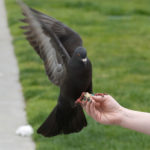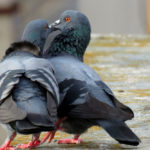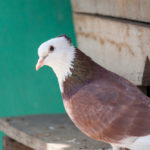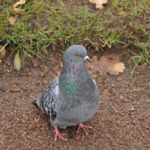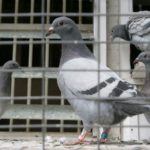We currently live in a world where pigeons inhabit most of the urban areas, with the feathered creatures residing in countless cities and suburbs.
And although some people consider these intelligent birds to be vermin, there’s no denying that their sudden absence would be noticed by the public.
So if you have ever wondered why there are so many pigeons in the world, then you have come to the right place.
Not only are pigeons known to mate for life, but they also lay their eggs at a fast rate, which results in an ever-growing population.
But how do pigeons mate and what effect does this have on the world around them?
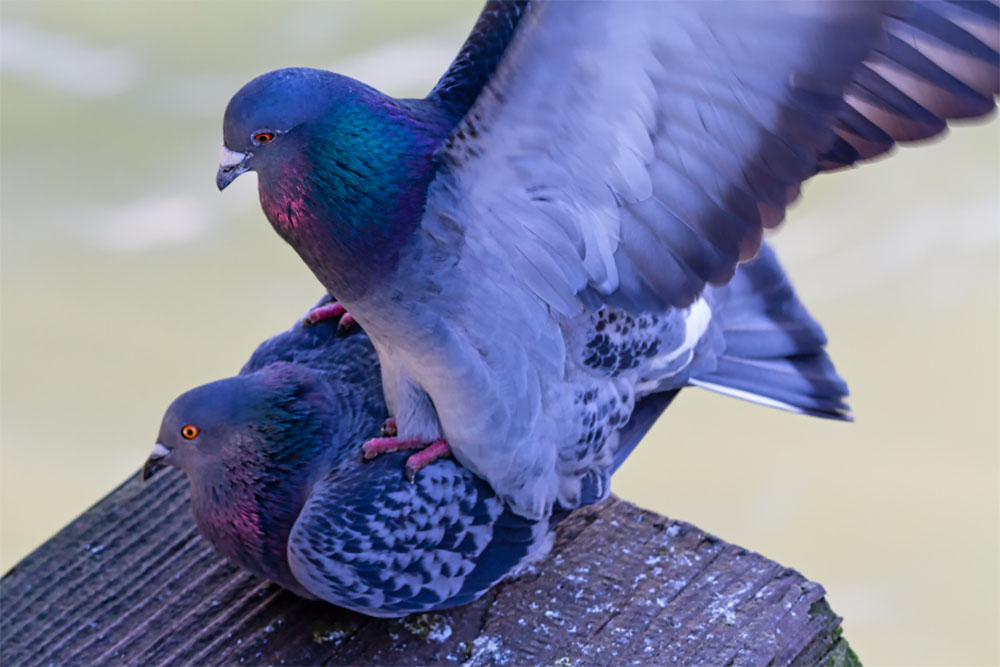
Well, everything you need to know can be found in the following paragraphs, where we have compiled together some interesting information concerning pigeon courtship and the child-rearing process.
In this article, we are going to showcase the various factors of pigeon mating to help demonstrate why this bird remains such a popular fixture in our modern society.
So if you love pigeons and are curious to learn more about these fascinating animals, everything you need to know can be found in the sections below…
Where Do Pigeons Come From?
As a species, the feral pigeon was first derived from the rock dove, making it a proud member of the Columbidae family.
Distinguished by its unique appearance and plumage, the pigeon is known to make its home in rocky surroundings such as cliffs, mountains and coastlines.
However, in an urban environment, the bird will commonly inhabit buildings and sidewalks where it can nest and breed.
What Are Pigeon Mating Rituals?
During the courting process, male pigeons will usually perform a distinctive mating ritual to attract a mate.
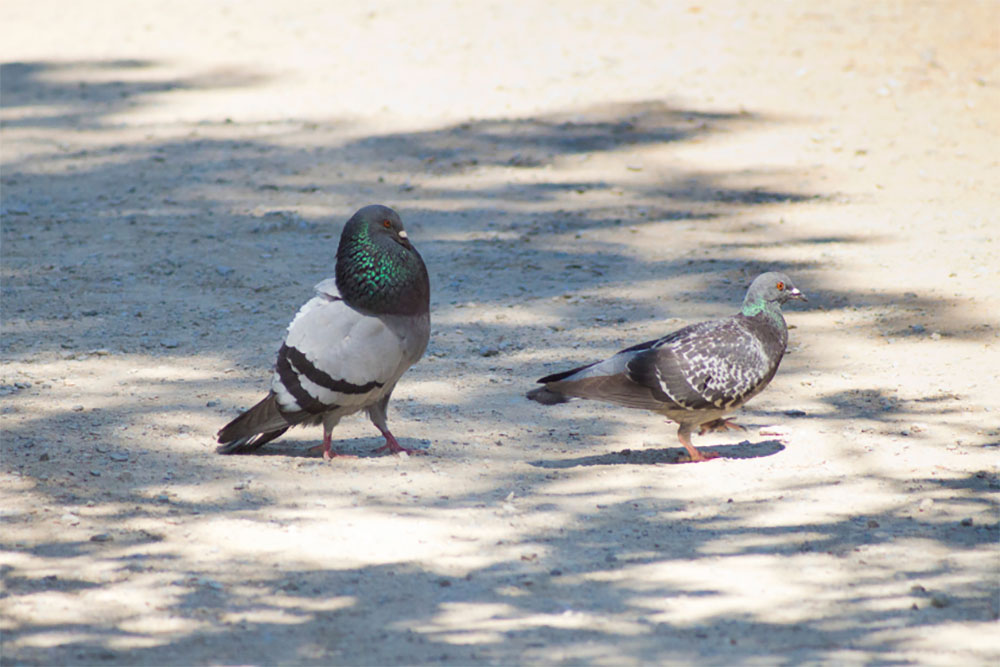
This ritual involves the male pigeon attempting to catch the attention of his desired mate by puffing out his feathers, which helps him to appear larger and more impressive than the other pigeons around him.
He will then approach the female while making noises, to determine whether her attraction is shared.
Once the ritual has been completed, the female pigeon will then fly away and the male pigeon will follow.
The courtship will then end in the male pigeon feeding his new mate some regurgitated food before the breeding process begins.
How Does A Pigeon Breed?
Both male and female pigeons are born with an orifice known as the cloaca, which is used to deposit urine and faeces.
However, the orifice is also used when two pigeons are ready to begin the breeding process.
During this practice, the male pigeon will mount the female pigeon and administer what is known as a ‘cloaca kiss’, which involves transferring the male’s sperm through the contact of both orifices.
Although this process is considerably slow (lasting only a few seconds) it will result in the female pigeon storing the sperm inside her body, where it will sit in her reproductive tract until the egg is released.
Once the egg is ready, the sperm will fertilize the embryo and the shell will begin to harden, with the casing creating a protective layer around the forming squab.
When Are Pigeons Expected To Mate?
Unlike other notable animals, both male and female pigeons are able to produce a substance called crop milk for their young, which they can make any time of the year.
The substance is made from a combination of digested food and bodily secretions, which allows the species to breed whenever they please.
However, it is very common for pigeons to mate and lay eggs up to six times a year, with the overall process only taking a few weeks to complete.
In most cases, a female pigeon will lay her eggs shortly after the breeding process, with the eggs themselves only taking eighteen days to properly hatch.
Pigeons will usually breed when the weather conditions are good and when there is a bountiful supply of food in the local area, as this will help to ensure embryonic development.
Fortunately, most urban areas will usually provide an abundance of food, which means feral pigeons are able to mate consistently throughout the year.
Are Pigeons Capable Of Showing Affection?
If you have ever owned or observed pigeons in their natural habitat, then you know that the species is capable of showing affection for those it loves.
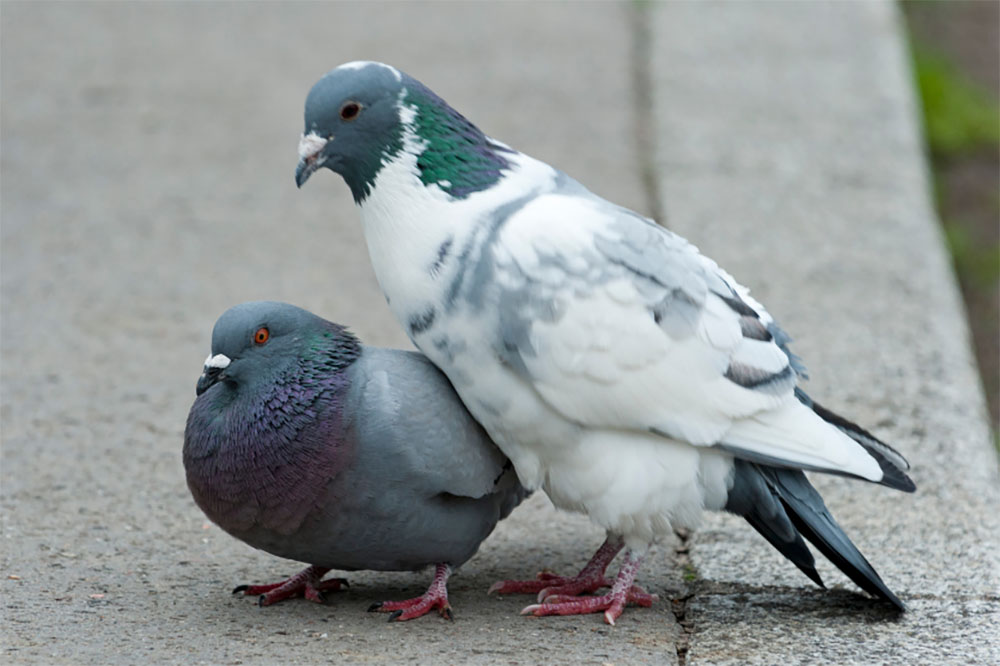
In fact, it is common for feral pigeons to interact through physical contact, with the species demonstrating its affection through cuddling and pecks.
For example, when a pigeon returns to its mate after searching for food, the two birds will usually greet each other with raspy coos and pecks on the head and neck.
Pigeons can also make for some highly affectionate pets, as the species has been trained to be comfortable around humans.
In a domestic setting, pigeons crave attention and love from their owners, with the bird demonstrating its affection through cuddling and cooing.
The species is also able to interact with other animals, although there are some pets that could pose a threat to the pigeon’s life.
Should you purchase a pet pigeon, you can keep them entertained during the day by giving them toys and accessories to play with.
How Can You Make Two Pigeons Mate?
Like most animals, pigeons need to become familiar with each other before they can mate, which means breeding pigeons can be a long and complicated process.
If one of your pigeons has already mated with another partner, then you will have to get them used to their new mate before the breeding process can begin.
This involves keeping the two birds in close proximity until they are comfortable enough to mate.
To help you understand how you can approach the mating process, we have outlined what you will need to do in the following instructions:
- To begin the mating process, you will need to place both pigeons in solid cages with separators, as this will help to hide the birds while allowing them to hear each other.
- Continue this process for a few days and then transfer both pigeons to solid but clear cages, so that the two birds will be able to see each other.
- When you have completed this step, you can transfer both pigeons to a single cage, where they should be able to touch each other.
- Leave the pigeons for a few days and they should be ready to mate, as both birds will be compelled to make babies with the only partner available.
This process allows both pigeons to grow comfortable with each other while stimulating their natural instinct to mate and reproduce.
However, if you own pigeons and want them to breed faster, then you will need to provide them with healthier food to aid in their fertility.
This involves feeding your pigeons a nutritious diet of high-quality grains.
It is also advisable to transfer your pigeons to a secluded cage, as this will give them the privacy they need to mate.
To help produce a relaxed and fertile environment, you can also give your pigeons wheat germ oil or add a bird light to their cage to create the perfect temperature needed for breeding.
How Can You Tell The Difference Between Pigeon Genders?
Telling the difference between male and female pigeons can be a long and complicated task, as both genders have the same appearance and sexual organs.
However, a key difference between the two birds is their behaviour, which is why it is often used to determine the sex of the species.
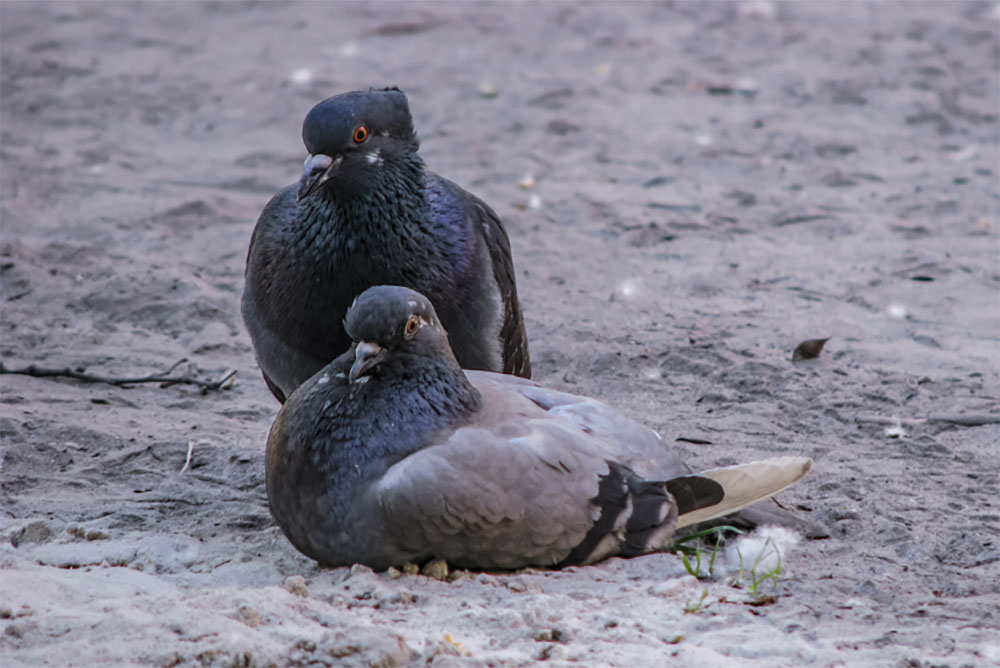
For example, when pigeons are in large groups, the males will usually try to impress the other pigeons by strutting around and fluffing their feathers, while also cooing at any attractive females.
You can also determine a pigeon’s gender by observing how they sit on their eggs, which is a role commonly shared by both parents.
Unlike other species of bird, pigeons follow a strict schedule when it comes to caring for their eggs, which can be used to determine the sex of the bird that you are observing.
In most cases, a male pigeon will protect the eggs in the morning and will swap with the female around mid-afternoon.
However, when it comes to observing two pigeons who are mating, you will also be able to tell the genders apart as the male will be the one mounting the female.
How Regularly Do Pigeons Lay Eggs?
The feral pigeons that we see in cities and suburbs will commonly lay 2 eggs during every mating cycle that the pigeons go through.
However, this does not mean that they will lay their eggs at once, as the female pigeon will usually produce the first egg before waiting 10-14 days to deliver the second.
This is because the female pigeon needs to assess the health and growth of the first egg before she can produce the second.
How Can You Tell If A Pigeon Is Laying Eggs?
If you own a female pigeon and she begins to exhibit strange and erratic behaviour, then this could mean that she is ready to lay her eggs.
In most cases, female pigeons will become broody or aggressive just before they deliver their eggs, so it is recommended that you track any sudden mood changes.
Another way to determine whether your pigeon is ready to lay their eggs is by examining their nests, which they will reassemble in preparation.
Why Are Baby Pigeon Sightings So Rare?
Although it is common to see pigeons every day, it is rare that you will ever encounter a baby pigeon on the side of the street.
This is because baby pigeons (otherwise known as squab) are kept in the nest until they have matured into fully-grown adults.
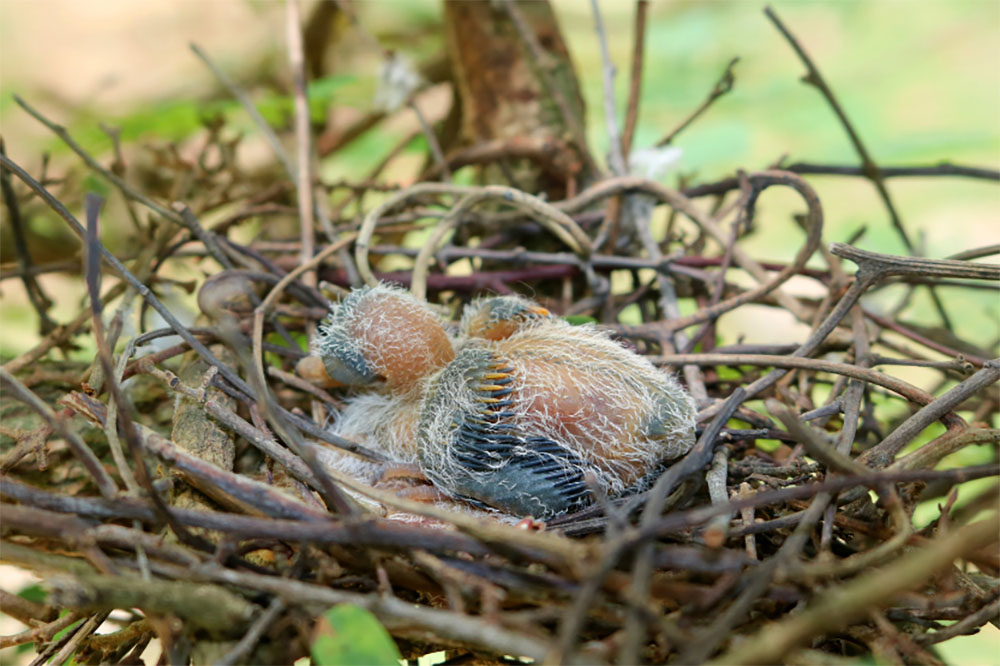
Feral pigeons will also build their nests in high and secluded areas, which is another reason why it is almost impossible to see baby pigeons in urban areas.
Traditionally, baby pigeons are kept in the nest until they are 4-6 weeks old, although this number can vary depending on how fast the squab can grow.
When they are ready to leave the nest, the baby pigeon will look like any other pigeon, which is why they are often mistaken for fully mature adults.
Will Pigeons Mate For Life?
Pigeons have been known to mate for life, although this does not mean that they will only breed with one partner.
In fact, a more accurate term than mate would be pair, as even established couples will breed with other pigeons when their partner is not around.
However, this process is completely normal and should not be viewed as a negative.
Although pigeons will regularly cheat on their respective partners, the bonded pair will still remain together to raise their young, with both parents working as a unit to care for and protect their hatchlings.
The couple can even recognize each other in a large flock of birds and will continue to breed until the end of their lives.
However, this does not mean that pigeons do not get jealous of potential mates, as male pigeons are known to be very territorial over their life partners.
If a male pigeon sees another male approaching his mate, he will chase the other male away to assert his dominance and possession.
Female pigeons will also follow this practice by running away from other males who try to court them in front of their partners.
But it is still common for both male and female pigeons to cheat on their mates with other pigeons, with bonded males mating with other females and bonded females seeking the companionship of more dominant males.
If you are breeding pigeons, then it is common for your breeding pair to break up should a better specimen come between them.
What Will Happen If A Pigeon Mate Dies?
When a pigeon mate dies, the remaining pigeon will understand that their partner has died and will leave the nest in search of a new mate.
However, this is not a fast or simple process, as it can take weeks or months for a widowed pigeon to find a new life partner.
Although, it is important to note that male pigeons will usually move on faster than female pigeons.
Can Pigeons For Same-Sex Pairings?
Although there are many animals that can proudly engage in homosexual relationships, pigeons do not fall into this category.
This is because male pigeons can be very aggressive towards other males, so the possibility of mating is incredibly rare.
Male pigeons have even been known to fight other males should they be contained in small or minimal spaces.
Male pigeons are also extremely territorial and will fight other males over space and female pigeons, so if you see a male mounting another male, the reason behind this will usually be more violent than romantic.
As a species, pigeons will exclusively form heterosexual relationships and will continue to mate with the opposite sex for the rest of their lives.
Is It Possible For Male Pigeons To Lay Eggs?
Like most animal species, male pigeons cannot lay eggs or deliver offspring, as this is a process only limited to the female gender.
During reproduction, male pigeons will release their sperm into the female pigeon’s body through the cloaca, which will then sit inside the female’s reproductive tract until the eggs are ready to be fertilized.
When the embryo is ready, the sperm fertilizes the eggs and the shell begins to form and harden, with the female pigeon delivering the egg once it has been completed.
Do Pigeons Leave Their Offspring?
If you see a pigeon suddenly fly away from its nest of hatchlings, then you have nothing to worry about, as this is completely normal and the pigeon is always guaranteed to return to its young.
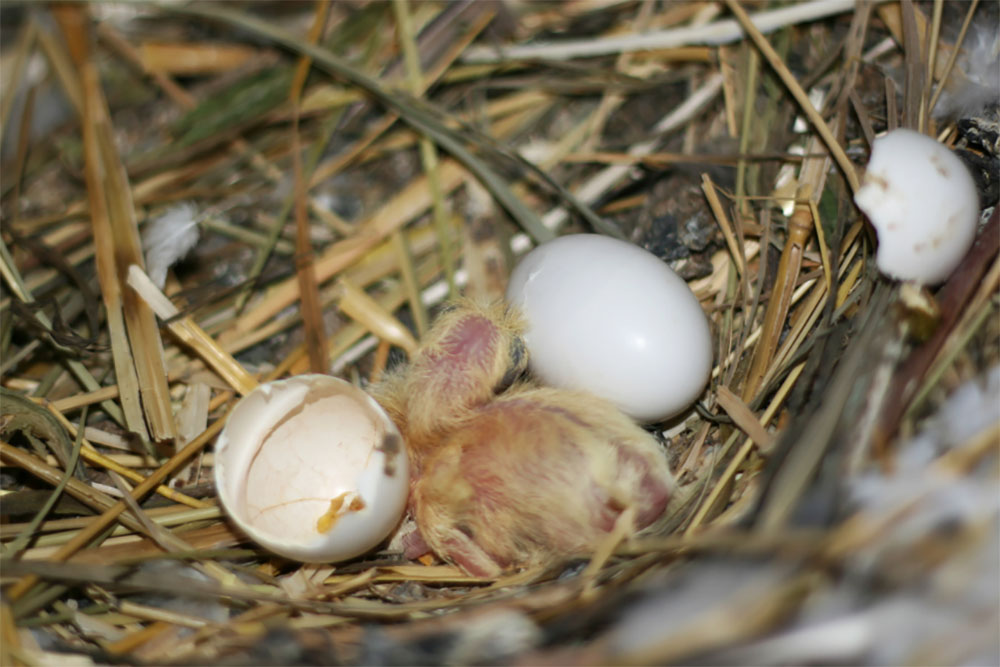
As we previously mentioned, baby pigeons will stay in the nest until they are 4-6 weeks old, with their parents caring for them until they have matured.
However, if the parents do not return to the nest, then this could mean that something has scared them or that they have spotted a threat.
Do Pigeons Die After Mating?
There is a common misconception that pigeons will die after they have mated, which is something that is simply not true.
The average pigeon will usually live for around 6 years and during this time it will raise at least 12 clutches of eggs with its breeding partner.
As we previously stated, pigeons are also known to be serial cheaters, which means that they will mate a lot during their short lives.
Although it may be common to find a pigeon that has died after mating, there is nothing to suggest that the death was caused by this process.
How To Get Rid Of Pigeons
These days, pigeons are often seen as vermin by humankind, with their large numbers and disease-ridden faeces causing severe damage to buildings and cars in urban areas.
So if you have noticed pigeons squatting on your windowsills or scurrying through your garden, then we have a few things that you can use to get rid of them.
Pigeons usually seek out human residences for food, water and shelter – as these are the main things that most animals need to survive.
So if you remove these resources from your property, you will make your home inaccessible to hungry pigeons, which means they will go elsewhere seeking the things that they need.
However, if you still find that there are pigeons perching on your property, then you can ward them off using one of the following methods:
Wires
If you have noticed pigeons on your balcony or windowsill, then you can use wire coils or stainless steel wire to deter the birds from landing on the rails.
Shock Tracks
It is also possible to purchase shock tracks for your home, which are electrical systems that can be used to shock the bird without harming it.
The device works to make the targeted area unattractive for potential perchers.
Netting
These days, it is possible to purchase almost invisible netting that can be used to exclude pigeons from your property.
This method is considered to be one of the most expensive, yet it still delivers some of the best results.
Sound & Reflected Light
Pigeons can be easily scared by loud noises and reflected light, which means you can utilize these fears when pigeon-proofing your home.
You can do this by purchasing a wind chime, or by hanging aluminium foil, reflective tape and even old DVDs.
Not only will this work to reflect light, but it will also disorientate the birds.
Plastic Predators
Another great way to protect your home from pigeons is by purchasing a plastic predator or effigy.
These work in a similar way to scarecrows, in that they represent a threat that the pigeon will want to avoid. These days, you can purchase plastic owls and snakes for the job.
Pigeon Spikes
Of course, you can also use anti-perching spikes (otherwise known as pigeon spikes) to stop the birds from landing on your window sills or roof.
However, spikes are best advised for small or compact areas where the goal is to move the pigeon to another location.
You can now purchase these spikes in various materials, from plastic to stainless steel.
Gel Repellants
Beyond the other methods we have mentioned, you can also purchase gel repellants to ward away any unwanted pigeons.
All you have to do is apply the gel to your windowsill or balcony and the product will work to make the surface sticky and therefore unattractive to perching birds.
The only setback is that the gel can also attract dust and dirt and need to be constantly reapplied.
Of course, if all else fails, then you can call pest control to deal with your pigeon problem, as they will have the supplies needed to make your property entirely bird free.
We hope that you found this article informative and that you will use it to educate others about pigeons and their mating habits.

